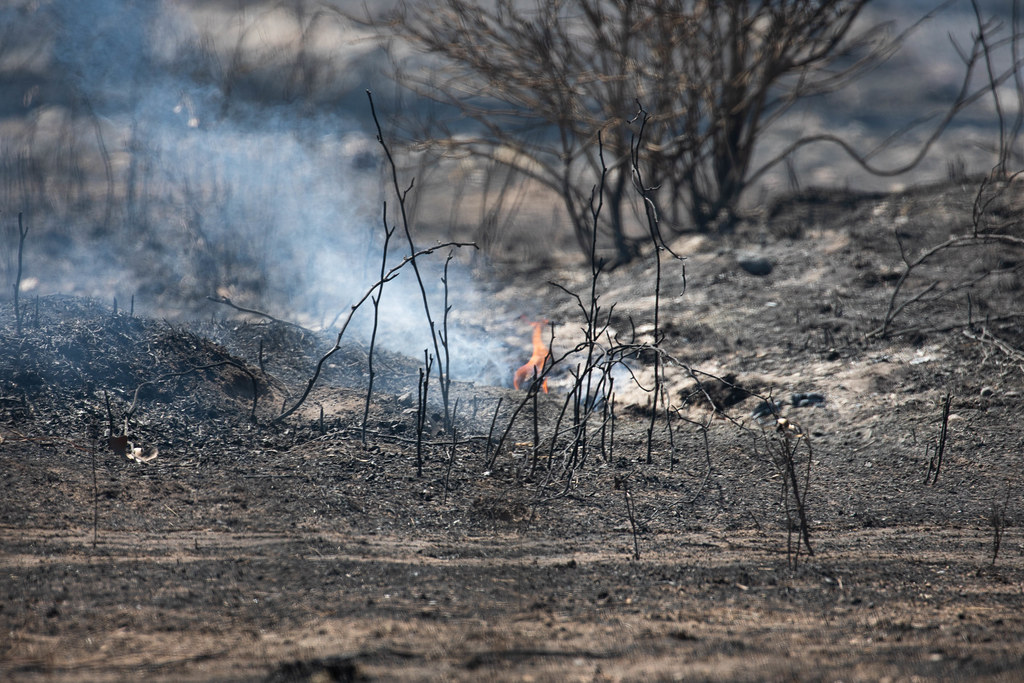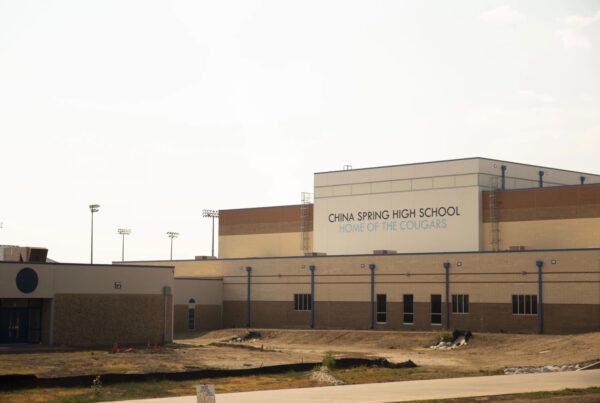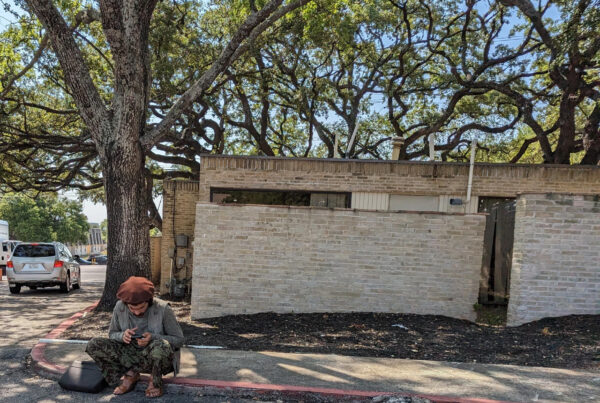Firefighters near Huntsville spent Labor Day weekend battling a large blaze being called the Game Preserve Fire in Walker County in East Texas. That fire is now mostly contained, but has scorched thousands of acres so far.
Meanwhile, wildfire risk remains high in much of the rest of the state, with 213 of the state’s 254 counties under a burn ban.
Erin O’Connor, public information officer with the Texas A&M Forest Service, said that this summer’s extreme heat and extended drought are leading to conditions favorable to wildfires. She spoke with the Standard about the current state of the Game Preserve Fire and other fires the Forest Service are monitoring.
This transcript has been edited lightly for clarity:
Texas Standard: What’s the current status of the Game Preserve Fire in Walker County?
Erin O’Connor: The Game Preserve Fire, it is looking significantly better. It’s currently an estimated 4,428 acres and 85% contained. They do have containment line all the way around the fire; it’s not moved in a couple of days. But firefighters are focusing on making sure that those containment lines are holding, that we don’t have any rekindling or anything that moves across those containment lines. And they’re just making sure that all the heat and anything that’s burning interior is out.
What seems to be the biggest challenge as these firefighters try to keep the fire contained within those lines?
So the biggest challenge we’re having this summer is that because we’ve had such hot temperatures and such dry conditions for a very long time now, that vegetation is so dry that it’s holding heat so much longer. So it’s taking a lot more time, a lot more effort to contain a wildfire.
And because of that, we are seeing rekindling like weeks later at this point, because that vegetation, it just holds so much heat. So we’re very careful to leave a fire. We want to make sure that it’s completely out and there’s no more heat.
What do you do in a situation like that? Do firefighters remain on scene? When you’ve got so many other hotspots that you’ve got to cover, that would really stretch your resources – so what do you do?
Yeah, it certainly does. And so we’ve increased our capacity; we’ve brought in out-of-state resources or we have local fire departments. And what typically happens is when we get a fire to a decent, you know, good point that we feel like the lines are going to hold, we will have firefighters check it every day.
They’ll monitor it, but they’ll be available to respond to other incidences as they happen. And so we’ll just kind of monitor a lot of those fires.
» GET MORE NEWS FROM AROUND THE STATE: Sign up for our weekly newsletters
Well, this is far from the only fire that firefighters are working to contain right now. Could you tell us about some of the other fires of concern that the Forest Service is monitoring?
Yes, absolutely. So we are currently monitoring a few other fires across the state. We still do have the Shearwood Creek fire burning in Jasper County. That was pretty significant about a week ago. And that’s a little more than 3,500 acres. That one is in a monitor status, so it’s looking decent.
We wrapped up a couple up in like Stonewall and Wichita County yesterday. Those were also pretty significant. We have one burning in Palo Pinto County right now, the Gotham Fire; it’s about 61 acres. And we do anticipate that we’re going to continue seeing wildfire activity this week, especially with some of the lightning that’s moved through the state.
Oh, boy. Can you talk more generally about fire conditions in the state? What areas seem to be most at risk? And you mentioned lightning. What about the factors that are increasing the fire danger out there?
So as far as the areas we’re looking at, more of that north central Hill Country area. It’s been pretty dry and pretty busy in East Texas, but we are anticipating that they’re going to get a little bit of that Gulf moisture moving through this week. So we might still see some fire activity, but it shouldn’t be as significant as it has been in the past couple of weeks.
So we’re kind of shifting our focus now to that north central part of the state. And it’s same conditions there, that we’re just seeing dry vegetation, those hot temperatures. And so it gets a little bit of fire weather – so increased wind speeds in the mix – then we do see some of those significant fires, but also just an increase in activity.
I think one of the questions that comes up for lots of Texans is, ‘well, what can I do to reduce fire risk?’ How do you answer them?
It is just being aware of the conditions, being aware of the activities that you do that may create a spark. And I think people don’t intentionally want to start a wildfire – I hope not, anyways – but it’s, you know, the Saturday that you decide you’re going to go fix your fence and use a welding machine or, you know, park your vehicle not in a paved space, but on tall, dry grass.
So it’s little things like that that you maybe don’t think are going to cause a wildfire, but with our conditions the way they are, that can absolutely create a spark and grow to become a wildfire.














